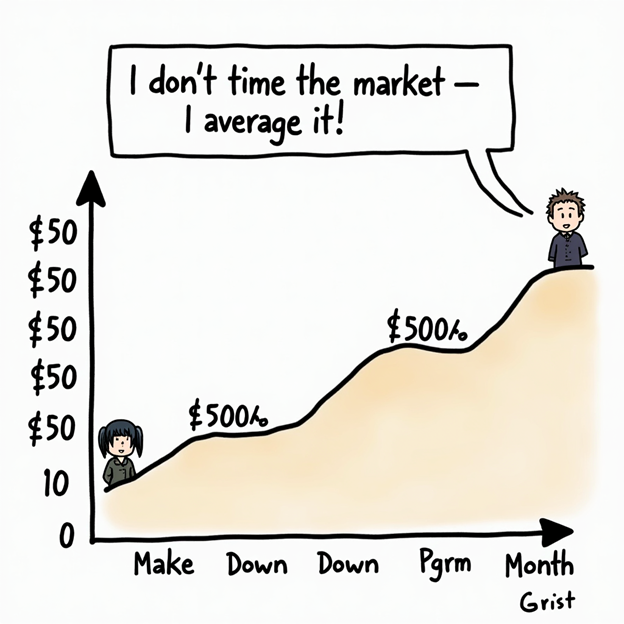There are no items in your cart
Add More
Add More
| Item Details | Price | ||
|---|---|---|---|
Rupee Cost Averaging (RCA) helps investors lower their average cost per unit by investing consistently across market cycles. Learn how it works and why it’s core to SIP success.
17/06/2025
One of the greatest secrets behind SIP success is Rupee Cost Averaging (RCA) — a strategy where you invest a fixed amount at regular intervals, no matter where the market is.
This results in buying more when prices are low, and less when prices are high — automatically averaging your cost over time.

How Does Rupee Cost Averaging Work?
Let’s say you invest ₹5,000 every month in a mutual fund. Here's what might happen:
| Month | NAV (₹) | Units Bought |
| Jan | 50 | 100 |
| Feb | 40 | 125 |
| Mar | 60 | 83.3 |
📉 Outcome: Lower average purchase price, reducing market timing risk.
Real-Life Example: Deepak’s Goal Planning Deepak started a SIP in 2020 for his daughter’s education goal in 2035.
✅ Helps avoid emotional investing
✅ Works in volatile and uncertain markets
Conclusion
You don’t need to time the market if you master Rupee Cost Averaging. It’s how smart investors build wealth — automatically.
Stick to your SIPs. Let RCA silently reduce your cost and increase your returns over time. Summary Table: Rupee Cost Averaging Explained
| Scenario | Market Trend | Average NAV Paid | Outcome |
| Volatile Market | Up and Down | Lower than average price | More units, better returns |
| Constant SIP Investment | Any condition | Auto-adjusted | Reduces timing risk |
| Lump Sum vs RCA | Uncertain times | Lump sum at one NAV | SIP with RCA fares better in volatile markets |

Dr. Satish Vadapalli
Research Analyst